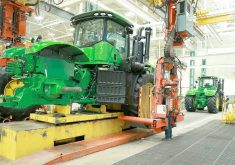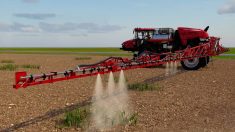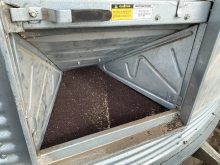Since 1896, the Western Stock Growers’ Association (WSGA) has supported a strong, free-market approach to the production and marketing of cattle in Western Canada. While protecting the interests of the livestock producer by lobbying government, the WSGA also promotes the enhancement and protection of the environment through sound range-management practices. In addition, the WSGA has long supported the fundamental protection of property rights of the individual, which lead to responsibility for all other actions including protection of the environment.
Currently, WSGA members operate on many forms of land tenure from deeded, to provincial disposition, to private rental arrangements, and as such have a significant stake in future land planning. WSGA predates the Alberta province (established in 1904) by eight years and has been involved in land use issues from the organization’s inception.
Read Also

Farm equipment sales sector sees significant structural changes
Farming equipment sales have been declining for a number of years now, and one industry professional believes structural changes in the industry are needed to curb that trend.
Today, many WSGA members operate on the same native grass that was there in 1896 when the organization was formed. As such, the WSGA recognizes that the Land Use Framework (LUF) process is the Alberta government’s attempt to address competing land uses. Just as land-based ecosystems are a complex interaction of all living organisms with soil, sunlight and water, the regulation surrounding land and land planning must also be complex and encompassing.
At the heart of WSGA’s concerns is the absence of property rights. The Alberta Land Stewardship Act (ALSA) provides the tools for land planning; however, section 11 gives government the ability to amend or extinguish any government statute consent such as a land title, licence, grazing or mineral disposition etc. Similarly, section 19 limits the right to compensation for the landowner. A result of LUF is government’s ability to meet societal goals (such as recreation) and environmental goals (like protection of headwaters) at the expense of landowners.
Alberta’s landowners cannot bear either a disproportionate or the entire burden for changes in societal values related to land. As stated by a WSGA member, “The Alberta Land Stewardship Act itself is a perfect example of top-down government centralist planning that reeks of totalitarianism, tyranny of the majority, and suppressive regulatory authority over the rights of individuals and property owners.”
Balance goals
The WSGA is, however, encouraged by the holistic land-planning goals of LUF, which outlines a balancing of societal, environmental, and economic goals. These are essentially the same goals that ranchers use on their own land – the balancing of family and land goals with the ability to meet those goals through finances generated from the ranch.
In terms of environmental goods and services (EGS), section 23 of ALSA provides for the support, research and implementation of market-based instruments to support and enhance the act. Similarly, the WSGA has developed a market-based approach to the environmental goods and services supplied by its members. EGS includes such things as water storage by grasslands, carbon capture by grasslands, habitat for all species (including endangered plants and animals) and scenic viewscapes.
The WSGA is involved in the initial development of a market-based approach for EGS and is actively promoting a pilot project with the government concerning the EGS supplied by ranchers for endangered grizzly bears and winter grass for large herds of elk.
As in any marketplace, the government will need to provide some basic legislation around the new agriculture product of EGS. The WSGA sees a divergence in policy within ALSA – first with section 11 and 19 stripping away property rights and then section 23 advancing a market-based approach to land planning.
The key to any marketplace is the fundamental right to property produced, whether it is grain, cattle or EGS. As WSGA president, I say it will be very hard for government to develop a market-based approach to land planning when they have stripped away property rights.
Regarding the four principal economic drivers in the South Saskatchewan Regional Plan (Agriculture, Energy Production, Forestry, and Tourism and Recreation) the WSGA comments that each of these economic activities fundamentally requires consistent opportunities for profit to ensure their success. In terms of recreational hunting, for example, landowners must have the ability to receive financial remuneration for services provided.
While the WSGA has confidence in the free market, it also has doubts about the wisdom of central planning, and those doubts are based on history. As an organization, the WSGA urges the Land Use Secretariat, the South Saskatchewan Regional Advisory Council and the Lieutenant Governor in Council to proceed with caution in exercising the powers they have been granted under ALSA.
———
Itwillbeveryhardfor governmenttodevelop amarket-based approachtoland planningwhenthey havestrippedaway propertyrights.














